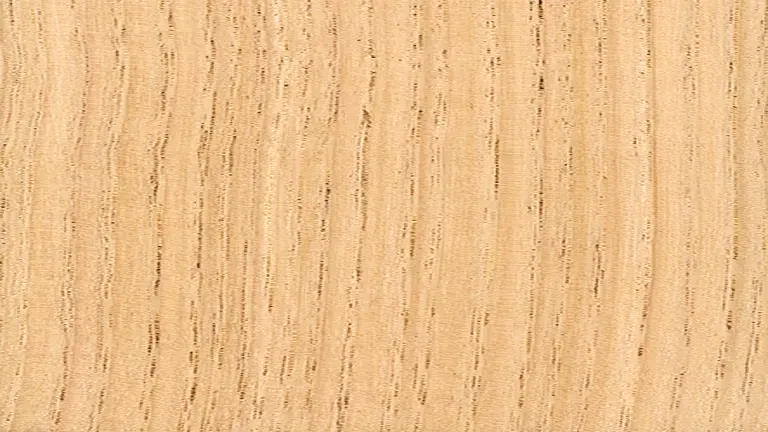American Chestnut Lumber
- July 25, 2023
- 0 comment
American Chestnut lumber known for its remarkable durability and versatility, comes from the American chestnut tree (Castanea dentata). This tree species was once prevalent in the Eastern United States, but sadly, it faced devastation due to the chestnut blight in the early 20th century, drastically reducing its population.

However, efforts are being made to reintroduce blight-resistant varieties and restore this iconic species. American Chestnut lumber is treasured for its attractive appearance, workability, and historical significance.
| Property | Description |
|---|---|
| Common Name(s) | American Chestnut |
| Scientific Name | Castanea dentata |
| Distribution | Eastern United States (historically) |
| Tree Size | Up to 100 feet (30 meters) tall |
| Average Dried Weight | 28 lbs/ft3 (450 kg/m3) |
| Specific Gravity | 0.45 – 0.56 |
| Janka Hardness | 540 lbf (2,400 N) |
| Modulus of Rupture | 9,800 lbf/in2 (67.6 MPa) |
| Elastic Modulus | 1,300,000 lbf/in2 (8.96 GPa) |
| Crushing Strength | 6,000 lbf/in2 (41.4 MPa) |
| Shrinkage | Radial: 4.5%, Tangential: 7.5%, Volumetric: 12.5% |
Additional Information
Color/Appearance
American Chestnut exhibits a beautiful range of colors, with its heartwood varying from light to medium brown, occasionally featuring darker streaks. In contrast, the sapwood tends to be lighter in color. As the wood ages, it develops a stunning patina, enhancing its overall appeal and charm.

Grain/Texture
The grain of American Chestnut is generally straight, adding to its classic and timeless appearance. The texture of the wood is medium to coarse, giving it a natural and tactile feel. Additionally, the wood boasts a high natural luster, contributing to its overall visual allure.
Rot Resistance
One of the remarkable features of American Chestnut lumber is its high resistance to decay and rot. This inherent property is attributed to the presence of natural extractives within the wood. As a result, it was historically favored for outdoor applications, where exposure to moisture and the elements was a concern.
Workability
American Chestnut is a woodworker’s delight due to its excellent workability. It responds well to both hand and machine tools, making it relatively easy to craft into desired shapes and forms. The wood’s good nailing and screwing properties make it a suitable choice for various construction projects. However, care must be exercised during the drying process, as American Chestnut can be prone to checking and warping if not dried properly.

Odor
Unlike some other wood species, American Chestnut typically lacks a distinct odor. This feature makes it particularly well-suited for indoor applications, as it won’t emit any strong or undesirable smells.
Allergies/Toxicity
American Chestnut does not have any specific reports of causing allergies or toxicity in individuals. This makes it a safe and comfortable choice for woodworking projects that come into contact with the skin.
Pricing/Availability
Due to the historical impact of the chestnut blight, American Chestnut lumber is relatively rare and limited in availability. As a result, it may command a higher price compared to more common hardwoods. Its scarcity adds to its allure and desirability for specialty woodworking projects.
Sustainability
Efforts are ongoing to cultivate blight-resistant American Chestnut trees and reintroduce them to their native habitats. Sustainability practices aim to protect and preserve this historically significant species, which once played a vital role in the ecosystem of the Eastern United States.
Common Uses
Historically, American Chestnut was widely used in various applications, including furniture, flooring, and outdoor items such as fence posts and railway ties. Despite its limited availability, it is still cherished by woodworkers for creating specialty woodworking pieces and decorative items. Additionally, American Chestnut serves as a symbol of American heritage, reminding us of the once-dominant tree species that held immense ecological and cultural significance.

Frequently Asked Questions
- Is American Chestnut lumber still available in the market?
While American Chestnut lumber is available, it is relatively rare and may not be as readily found as more common hardwoods. - Why is American Chestnut important historically?
The American Chestnut was a dominant tree species in the Eastern United States before the chestnut blight. It played a crucial role in the ecosystem and was extensively used by early American settlers for various purposes. - Can I use American Chestnut outdoors?
American Chestnut’s natural resistance to decay makes it suitable for outdoor applications like decking and siding, but its limited availability may make it less practical for large-scale projects. - Is American Chestnut suitable for woodworking projects?
Yes, American Chestnut is prized for its workability, attractive appearance, and historical significance, making it a great choice for specialty woodworking projects. - What efforts are being made for the restoration of American Chestnut trees?
Several organizations and researchers are working on developing blight-resistant American Chestnut varieties and restoring the species to its native habitat. - Is American Chestnut a sustainable choice for lumber?
While efforts are underway for restoration, the sustainability of American Chestnut lumber depends on responsible sourcing and cultivation practices.
We’d love to hear from you! Share your personal experiences and thoughts about American Chestnut lumber in the comments section below. Your insights could be invaluable for others looking to work with this remarkable wood!







Leave your comment